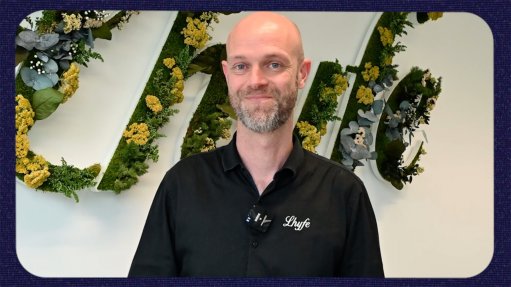Low-skilled labour plan could provide solution to unemployment challenge
Industrial research and development engineering company Greville Wood Developments (GWD) is awaiting funding to re-create a 1986 manufacturing proof study and farming plan, called the Warrenton Plan, which could collectively create about 2 300 jobs in Warrenton, in the Northern Cape and subsequently be rolled out into low-skilled communities across South Africa.
GWD owner Greville Wood tells Engineering News that he has submitted proposals to several government offices, including the Department of Trade and Industry and the City of Johannesburg, to prove the effectiveness of the plan as a job and wealth creator in rural and township areas.
Warrenton has been selected for the rural component of the project and Wood explains that the project will initially provide training, employment and business ownership for 50 unskilled and unemployed community members.
The project requires R13-million in loan finance to develop the training programmes and the farms. An additional R3.5-million in grant funding is required for further training, as well as the development of a mentorship and management systems programme.
“The job-creating potential is significant, creating more than 2 000 farming jobs and 300 manufacturing jobs in a town of some 25 000 people with high levels of unemployment,” Wood asserts.
Meanwhile, the Dieplsloot township, in Johannesburg, has been selected for the urban component of the plan, which entails the training and development of 50 farmers through an apprenticeship programme. The project also requires R13-million in loan financing and a R2.5-million grant.
The manufacturing component of the project, which entails the manufacturing of low-cost housing units, requires between R6-million and R8-million, depending on the product complexity.
Wood highlights that the manufacturing component of the plan aims to produce four low-cost houses a day, which can then be used to replace the informal dwellings of Warrenton and Diepsloot. Further, the people employed under the plan will receive training to manage their own farming and manufacturing businesses, which can individually be established in about nine months.
Once the study has been completed, the South African Bureau of Standards (SABS) will need to develop the manufacturing specifications for the low-cost houses and raise the quality bar for these units. Subsequently, and once further funding has been secured, the project can move into the development of SABS-approved houses anywhere in South Africa, with the added feature of bondability.
Warrenton Plan History
In the 1980s, car manufacturer Ford, then based in Port Elizabeth, developed a hive manufacturing concept to create employment opportunities for skilled jobs that had become redundant, owing to greater levels of factory automation.
Wood notes that the intention was to provide self-employment for the displaced workers by providing facilities and equipment to enable tradespeople, including welders, carpenters and machine operators, to earn an income.
The hive manufacturing concept was the main driving force behind the creation of more than 500 000 jobs over a ten-year period, he asserts.
The success of the hive concept prompted Ford, together with car manufacturer General Motors and tyre manufacturer Goodyear, to commission and finance a study to create industrial jobs by providing a platform for the mass transfer of usable skills to low-skilled communities.
Firstly, communities would be taught to manufacture houses and classrooms, with the added benefit of developing about 20 different skills that could be transferred to any part of the country. “By developing a skilled manufacturing base countrywide, product engineering that transformed the automotive industry in South Africa in the 1960s could be used to transform this trained labour-intensive manufacturing base into general manufacturing and transform the country into a major manufacturing centre,” Wood explains.
The second component of the plan was to teach communities to farm beyond subsistence and develop a commercially viable farm capable of providing additional wealth for the community.
Finally, the study also aimed to modify Ford’s process management systems to better suit farming and the manufacturing of housing units, as well as to overcome skill shortages. This would ensure that the manufacturing and farming components could be properly managed and would be commercially successful, thereby developing viable businesses that banks could finance.
Comments
Press Office
Announcements
What's On
Subscribe to improve your user experience...
Option 1 (equivalent of R125 a month):
Receive a weekly copy of Creamer Media's Engineering News & Mining Weekly magazine
(print copy for those in South Africa and e-magazine for those outside of South Africa)
Receive daily email newsletters
Access to full search results
Access archive of magazine back copies
Access to Projects in Progress
Access to ONE Research Report of your choice in PDF format
Option 2 (equivalent of R375 a month):
All benefits from Option 1
PLUS
Access to Creamer Media's Research Channel Africa for ALL Research Reports, in PDF format, on various industrial and mining sectors
including Electricity; Water; Energy Transition; Hydrogen; Roads, Rail and Ports; Coal; Gold; Platinum; Battery Metals; etc.
Already a subscriber?
Forgotten your password?
Receive weekly copy of Creamer Media's Engineering News & Mining Weekly magazine (print copy for those in South Africa and e-magazine for those outside of South Africa)
➕
Recieve daily email newsletters
➕
Access to full search results
➕
Access archive of magazine back copies
➕
Access to Projects in Progress
➕
Access to ONE Research Report of your choice in PDF format
RESEARCH CHANNEL AFRICA
R4500 (equivalent of R375 a month)
SUBSCRIBEAll benefits from Option 1
➕
Access to Creamer Media's Research Channel Africa for ALL Research Reports on various industrial and mining sectors, in PDF format, including on:
Electricity
➕
Water
➕
Energy Transition
➕
Hydrogen
➕
Roads, Rail and Ports
➕
Coal
➕
Gold
➕
Platinum
➕
Battery Metals
➕
etc.
Receive all benefits from Option 1 or Option 2 delivered to numerous people at your company
➕
Multiple User names and Passwords for simultaneous log-ins
➕
Intranet integration access to all in your organisation

















